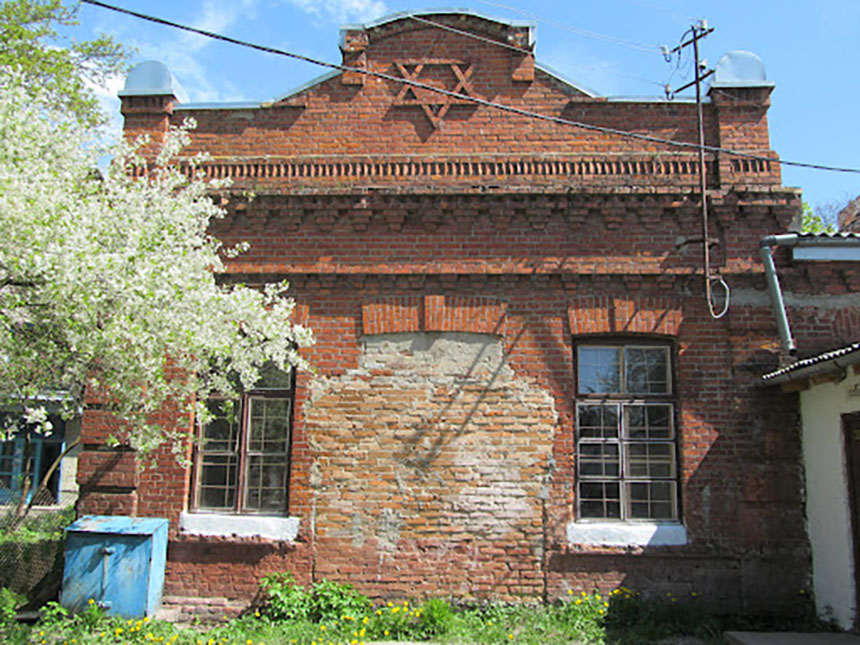Volodymyr's Jewish heritage: What you can see in the city with a thousand-year history (Pt. 2)
On today's “Encounters” program, dedicated to Ukrainian-Jewish relations, we are continuing our conversation about the history of the Jewish community in the city of Volodymyr.
In the first part of the program, "A thousand years of history: what we know about the life of the Jewish community in the city of Volodymyr," we established what is known about the life of the city's Jewish community.
Our guest is Volodymyr Muzychenko, a regional historian, member of the Ukrainian Association for Jewish Studies, and the author of the book Jewish Ludmir: The History and Tragedy of the Jewish Community of Volodymyr-Volynsky: A Regional History.
Today we asked Mr. Muzychenko about the historical, architectural, and material heritage that remains of the large Jewish community in this city.
Jewish architecture in the city of Volodymyr
Vasyl Shandro: What things connected to Jewish culture can one see in Volodymyr?
Volodymyr Muzychenko: I have to say that, unfortunately, most of the buildings, first and foremost the Central Choral Synagogue, have been lost. The synagogue was destroyed in the 1950s. According to my information, it was an eighteenth-century building and quite interesting. There are eyewitnesses who have described it with great warmth and delight. Of course, given the destruction of the Jewish community and the fact that this building sustained serious damage as a result of combat operations and bombings, it was not restored. We know that the Soviet government was also destroying churches as well as synagogues; so they simply dismantled it. Eyewitnesses recounted the difficulties that accompanied the dismantling; tank tractors were used to pull it apart. They pulled a long time. For a long time, they could not budge the walls; that's how strong and massive they were.
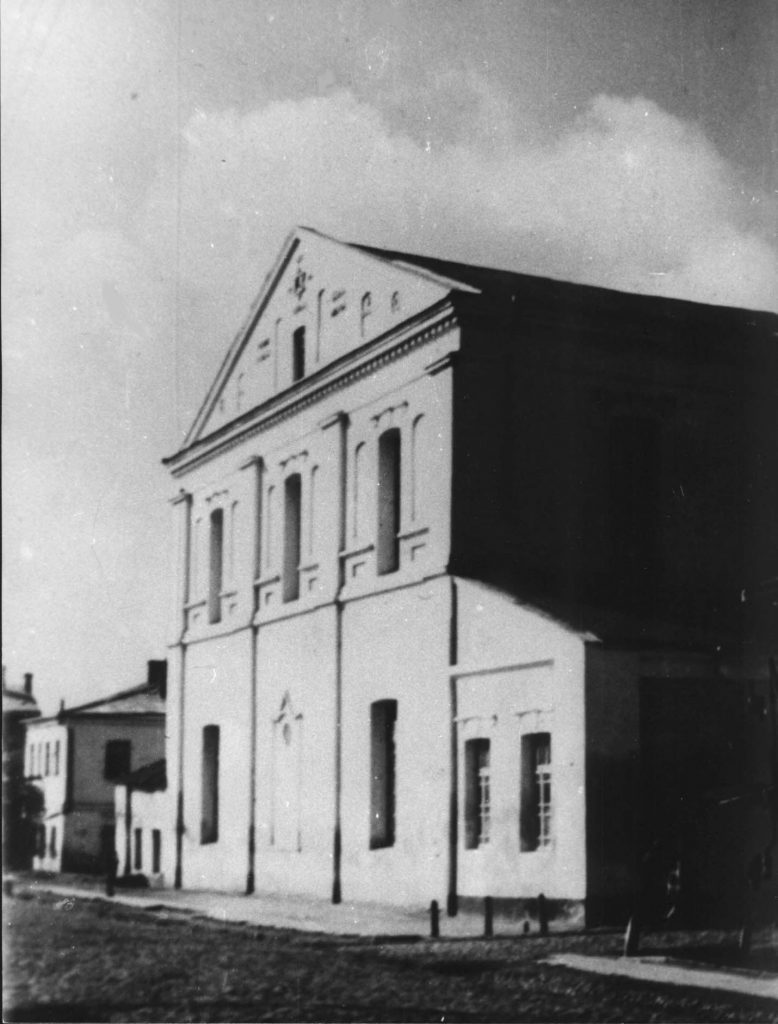
Not so long ago, we lost the Tarbut school, which in translation means "culture," where young people who were planning to move to Israel to build their state studied.
Among the buildings that have been preserved to this day is one that was known as Shulman's Synagogue. Why Shulman? Because he was a businessman who owned a mill, and next to this mill, he built this edifice. Today this building is used by various private organizations.
There is a building that once housed the Akiba Club and a small prayer building — a synagogue.
A rather interesting building that has been preserved is one that belonged to the Jewish community and likely belonged to a wealthy Jew. The walls of this building still show the traditional Jewish symbol ets hayim, the tree of life. This building has been partially reconstructed and looks slightly different from the way it used to, the way I remember it. Nevertheless, judging by the way it is constructed and outfitted, it is a traditional Jewish building.
Some buildings that once housed schools have been preserved. For example, the premises of the men's Jewish school. There is quite an interesting building that may not last long because, as far as I know, it is scheduled for demolition. This building housed a Jewish school for girls from Orthodox Jewish families. It was called Beit Yakov, meaning "Jacob's House." It is a shame that we are losing this heritage.
Another building that remains standing is one that once housed a Talmud-Torah school, and on one side of the building, the traditional Jewish symbol, the six-pointed Star of David, has been preserved. Many people who come to our city to pray or see where their parents lived are amazed that this building is still standing.
There is also a building that was owned by a rabbi who was mentioned by many people born in Volodymyr. As regards the Jewish heritage, a small number of Jewish cultural items are preserved in the local history museum. But little is left, unfortunately.
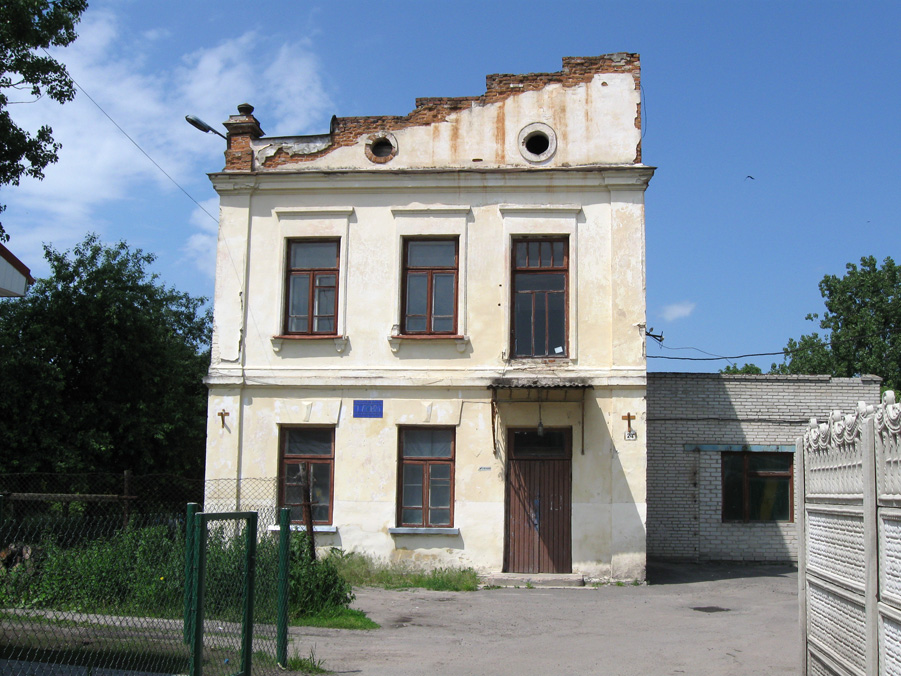
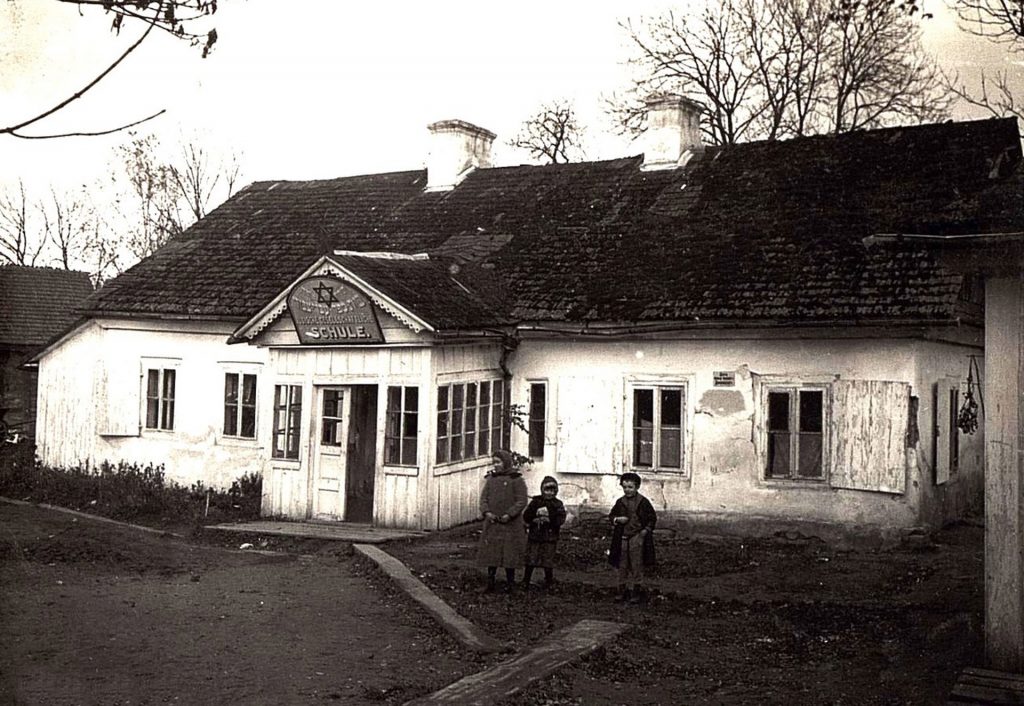
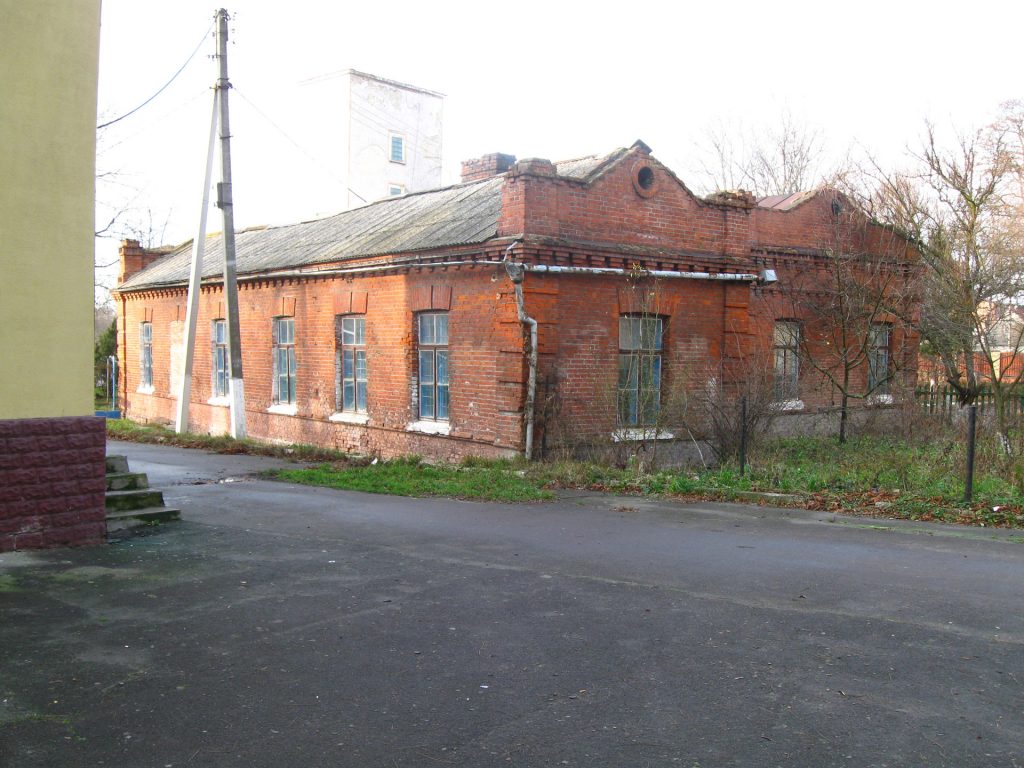
Do any attributes of Jewish culture and family life remain in Volodymyr?
Vasyl Shandro: Books, family albums, educational materials, some items from synagogues — hardly anything is left?
Volodymyr Muzychenko: Yes, hardly anything is left. There are, for example, several Torah shields, ornaments that adorn the Torah scroll. For those who are not aware, these are handwritten scrolls. The Pentateuch of Moses are the first five books of the Bible. They are preserved in Poland, in a museum in Cracow.
Famous Jewish people from Volodymyr
Vasyl Shandro: What do we know about the famous people who were born in this city? Who, in your opinion, should be mentioned in our conversation?
Volodymyr Muzychenko: Of the interesting figures who lived in Volodymyr-Volynsky, who were born here, the tsadik Shlomo Gottlieb and the Maiden of Ludmir should be mentioned. These people are known all over the world. It is a shame that no streets have been named after them.
Vasyl Shandro: In other words, they are not marked on the current map of the city?
Volodymyr Muzychenko: Right. If, for example, we take the Maiden of Ludmir — Khane-Rokhl Werbermacher — she is known all over the world because she was the first female rabbi; she carried out the function of rabbi in Volodymyr. This topic is debatable because there are various approaches to this phenomenon because, in Orthodox Judaism, a phenomenon like a female rabbi is an anomaly. Nevertheless, this was a woman who carried out this function, and it was she, in fact, who launched the women's rights movement. Through her own example, she proved that a woman could be not just a mother, not just a homemaker carrying out purely domestic duties. She could also be a community leader. This is a rather interesting phenomenon.
In her adulthood, she immigrated to Israel, to Palestine, as it was known at the time, and she died in Jerusalem. So far, she is the only person that I know of who had the honor of being buried on the Mount of Olives. I visited her grave, I found it. Incidentally, the way I located her grave makes for a very interesting story. Today there is a street in Jerusalem bearing her name, but there is no such street in Volodymyr, unfortunately. This is not quite right because until very recently, there was not a single mention of the Jewish community in our city. The first such mention was the installation of a monument on the site of the former ghetto. Once again, I was the initiator of this project; that is, I was in charge of practically the entire process of erecting this monument. Besides this monument, there is nothing in our city, unfortunately: no commemorative plaque or street name that would identify a person who, say, is famous throughout the world and with whose name our city is connected.
People from all over the world come to pray at Gottlieb's grave. They are sometimes surprised when I tell them that many people from our city make pilgrimages to Israel and visit the Wailing Wall, in order to leave a note and pray to the Almighty, while people come here from Jerusalem and other places in Israel to pray at the grave of Shlomo Gottlieb and to leave a note.
The Ukrainian and Jewish communities before the war
Vasyl Shandro: How is the memory of the coexistence of various communities recorded? What did you succeed in recording, at least in the last few decades since you began to be interested in this topic? Could you also say a few words about the people with whom you managed to communicate?
Volodymyr Muzychenko: While I was working on my book, communicating with various people, and collecting testimonies, I noticed that the individuals with whom I was communicating said with one voice that before 1939–1941, meaning, before the Second World War, people lived very peaceably; on top of it, there were Jewish shops in the city center. A lot of people mention one and the same circumstance: that you could visit these shops any time, people were always welcomed in a friendly fashion, and if need be, people met each other halfway. For example, you could buy any merchandise and pay for it later. In other words, there was absolute trust and understanding among people.
People described various situations. For example, when the Jewish population was being killed, people fled the city of Volodymyr, they went to another village, turning to the people with whom they had traded, for example. Some sold merchandise or mechanical household items, while others brought them food or some kind of agricultural products. There was complete trust; people absolutely normally bartered and coexisted; there were no conflicts.
Conflicts began to emerge with the advent of Nazi propaganda, which, of course, reached Volodymyr-Volynskyi. There were people who had certain political preferences, and there were conflicts. But, as a rule, these conflicts were provoked by political issues. In general, ordinary people coexisted normally [with Jews], and there was an understanding. My own mother told me about this; she was from Rivne oblast, which is not that far from here; it's practically the same territory. She also talked about how they socialized with neighbors, traded with them, and there were no problems based on ethnicity, where someone treated someone else badly on an ethnic basis.
The methodology of teaching history: remain silent or discuss?
Vasyl Shandro: Your example is one way to work through the past. As I understand it, your mother is Jewish and your father…?
Volodymyr Muzychenko: My father is Belarusian.
Vasyl Shandro: And you study the history of Ukrainian Jews in the city of Volodymyr. You probably encounter this question frequently: how to be — and how can one be — unemotional about the perception of one fact or another? Is it worth glossing over something, or should one discuss it? I am talking about the problems that we have in common. Have you formulated some kind of methodology for work on memory? In your opinion, what methods of remembering are not entirely correct?
Volodymyr Muzychenko: Definitely, history is very eclectic, and there have been many moments in our history, various moments in Ukrainian-Jewish relations. And only honest discussion of such issues offers a chance to build a society in which there will be mutual understanding and order.
Of course, if we're talking about types of conservation, there are many, and so there should be. There is conservation of architectural structures; there is conservation of artifacts. There is also conservation of graves and cemeteries, especially mass burial sites, places where the Jewish population was shot. There is also historical research, that is, the writing of books, the creation of films. Of course, there are aspects that surprise me, to put it mildly, when, for example, the capture of Volodymyr-Volynskyi by Nazi Germany is turned into a board game. Someone is simply making money from this. A game is created whose goal is to capture the territory of Volodymyr-Volynskyi and surrounding villages. I think that not every type [of conservation] is acceptable. If, for example, comics, drawings recount the life of Anne Frank, I can understand this. But I don't quite grasp when it is turned into a game.
Why is it worthwhile visiting Volodymyr?
Vasyl Shandro: To summarize our conversation, why is it worthwhile visiting your city and what are some places that visitors should see?
Volodymyr Muzychenko: Why is it worthwhile coming here? Our city is small (a population of nearly 38,000); it is a raion [district] center. But it is a city whose history goes back more than a thousand years. And we have a sufficient number of historical sites — and not just — which pertain to Jewish history and some very interesting, ancient churches that visitors should come and see. These are the Church of St. Basil, the Assumption Cathedral, and Zymne Monastery. Of course, there are structures that are connected to Jewish history, and they have remained standing.
Of course, our city will be glad to host guests, people who will come to see it and touch this history. We have wonderful tour guides who will show you around the city and talk about it. I think that everyone who visits our city will be satisfied by the experience.
Volodymyr's Jewish musical heritage
Vasyl Shandro: You are a music teacher. Do you research the musical heritage, especially the Jewish one?
Volodymyr Muzychenko: Frankly, I was not engaged in researching the Jewish musical heritage, but among the materials that I worked on, I found some very interesting stuff. This is an audio recording connected to Volodymyr, which was made during An-sky's expedition to our city. A nigun was recorded. A nigun is a piece of vocal music without words that is common to the Hasidic milieu. A young man sang this nigun, and it was recorded and preserved by this expedition.
This program is created with the support of Ukrainian Jewish Encounter (UJE), a Canadian charitable non-profit organization.
Originally appeared in Ukrainian (Hromadske Radio podcast) here.
Translated from the Ukrainian by Marta D. Olynyk.
Edited by Peter Bejger.
NOTE: UJE does not necessarily endorse opinions expressed in articles and other materials published on its website and social media pages. Such materials are posted to promote discussion related to Ukrainian-Jewish interactions and relations. The website and social media pages will be places of information that reflect varied viewpoints.







